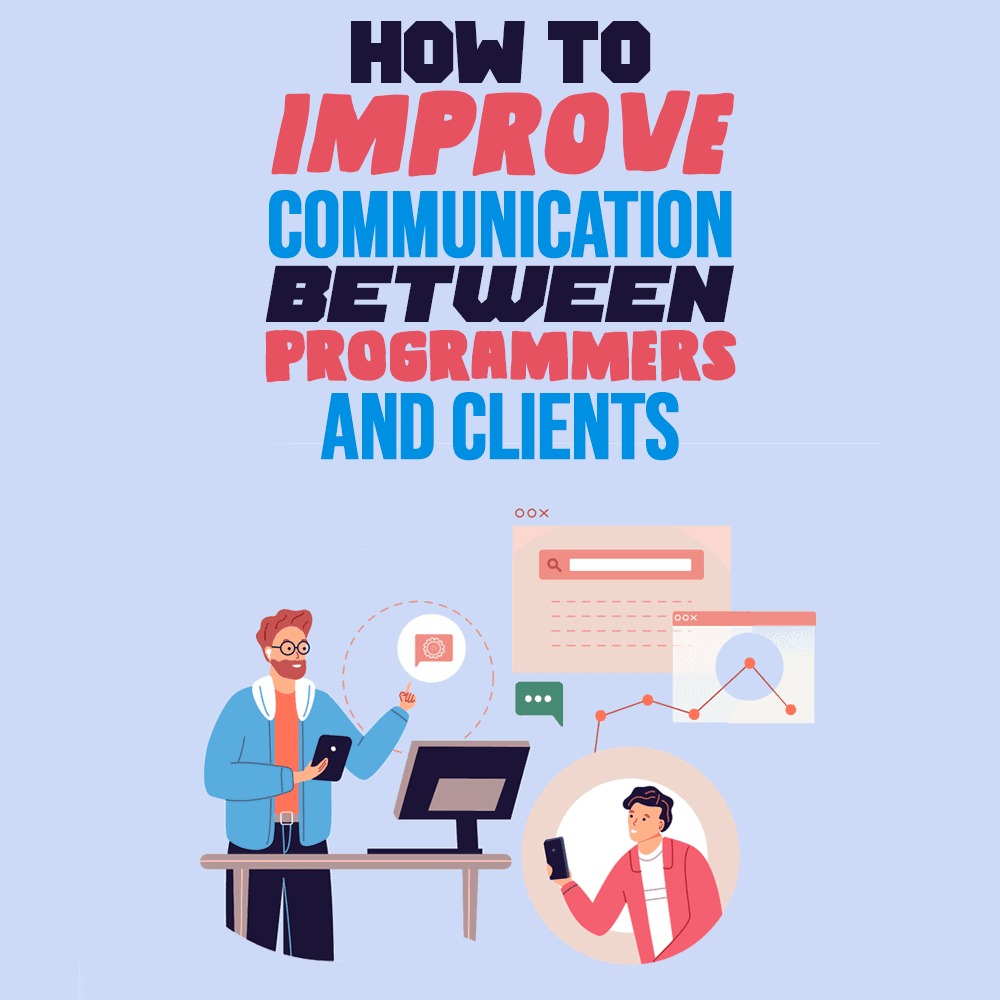
Several problems are at fault when it comes to developer-client communication. Miscommunication usually comes down to:
- Communication tools
- Problem complexity
- Update frequency
- Conciseness
- Asking questions
- Remaining respectful
We’ll discuss each of these points in greater detail below.
It’s important to stress that overcoming these challenges isn't always as simple as desiring to make changes. You have to work on your communication skills. Over time, you can go over the obstacles that would lead to miscommunication with clients in the past.
Let’s explore how to improve communication between software developers and their clients.
1. Use Effective Communication Tools
What makes a communication tool effective? Well, it comes down to the types of communication channels it supports that clients and developers need. For example, apps like Nextiva feature voice, video, and messaging. That way, you can use different formats of communication when needed.
Messaging is the perfect option that helps keep up with Agile Estimating and Planning through simple status updates. You can use messaging for updates about deadline extensions if there’s a challenge on the project.
Complex challenges can require more details to be shared and more than asynchronous communication. That’s where audio and video calls are the most effective solutions. Ten to fifteen minutes is more than enough to present a programming issue about a project.
For example, you can write a message for weekly status updates because the information resembles a pre-set template on the status of the project. What has been done, what’s currently in progress and what’s the next step.
Yet, if an architectural challenge affects the platform, it’s necessary to have a video call to allow for back and forth communication to more effectively problem solve. That’s the best way to cover the problem in-depth.
The alternative to video calls when looking for in depth explanations is to write an essay that describes the issue. Not only is essay style writing more time-consuming, but it can also create understanding gaps that lead to more miscommunications since the reader can’t get an immediate answer if something’s unclear.
Luckily, there are plenty of communication tools available in the market. Some of the popular ones are:
- Slack — Slack is one of the most popular options for developer communication. It offers messaging, regular calls and video calls. However, not all clients use it. If that’s the case, there are other options to consider.
- Skype — Some clients still prefer Skype communication. Installing and using the tool is simple. It supports messaging, regular calls and video calls. Using it is a good way to reach clients on their phones if you have Skype credits.
- Zoom — Zoom recently became popular as a go-to solution for group calls. Using it is simple because all you need is a client's email. You can schedule a group call in a couple of steps.
Efficiency in client communication is the first gap to bridge. You need to equip yourself with the right tool to easily share the programming challenges you come across.
2. Simplify the Problem

Clients want their product or platform to work, and that’s usually it. You, on the other hand, have a look from a completely different perspective. Improving your soft skills such as flexibility, decision making and empathy greatly matters in this scenario. Soft skills make it easier for you to get in your client’s shoes and present the problem more simply.
In short, instead of delving deep into the specifics of a programming language, explain how a specific issue affects the output. When you communicate the problem in a way everyone can comprehend, the client can understand the implications of choosing a solution for their project.
3. Stay Concise and Clear
A common misconception is that consciousness and cleanliness are interchangeable. Even though they are similar, they mean different things.
Conciseness means keeping the message to the point and. That means excluding unnecessary words, repetitiveness, and redundancies. The goal is to use common simple language that people can easily understand.
Clarity means being precise with your words. The written or spoken sentence needs to transmit an unambiguous message to the listener. That’s especially important in written communication due to its asynchronous nature. Adding a single unnecessary word can make a sentence ambiguous. Check the pronouns you’ve used, they often lead to misunderstandings.
Clarity is important in all industries. Especially in industries where facts and logic are dominant ones. Programmers need to practice it daily, as technical mistakes can lead to dozens of hours going to waste. After all, it can help to turn prospects into clients and therefore help you increase revenue.
The best way to determine whether you’ve written a concise and clear message is to analyze whether it’s open to interpretation. Before clicking on send, go back to your client’s previous message and check whether your reply answers the question. If the texts appear to offer full explanations, you can forward the work to your client with confidence.
4. Adapt Communication Needs to Project Needs
Working on a single project for a long time creates aligning habits. It can be easy to get used to a certain communication tempo that might not be optimal for all projects. If you are someone who doesn’t change projects that often, don’t forget that not all communication should, or can be, because different projects have different communication needs.
For example, a long agile project will require you to go back and forth with the client several times per week. If the client doesn’t understand the constant need for communication before you start working together, make sure you mention it. Setting expectations for communication is one of the first steps in communicating needs.
Consistent communication is necessary on long-term programming projects and is the only way to stay on the right path and meet the client’s requirements. The communication isn’t just from the developer to the client, the client may have ideas and suggestions to share too. If the client wants to introduce changes to the project, it will have to be communicated at the right time. So you know which tasks to prioritize.
A great part of being a part of a smaller project is that it allows you to be more directly involved and make precise project estimates. Once a list of milestones is created, you can create a weekly meeting schedule to update the client on your progress. If a call is unnecessary, a simple email containing details will suffice.
5. Ask Questions
One of the common mistakes programmers make is not asking questions. Or if they do, they ask them in a way that doesn’t clearly convey their needs. Analyze project details before you start working on it in a way that you will see which parts of the project need additional clarification. By first analyzing, your questions will be more focused.
Now, what are the right questions to ask? Open-ended questions will provide you with the most information about a project. For example, questions starting with why, when, how, and what will draw in the client and, they’ll share more valuable details about the project.
Asking open-ended questions allows for the client to share what's most important to them while also keeping the question focused. You can then ask follow up questions from their answer. This method allows for the dialogue to be more valuable and fluid versus yes/no questions that don't allow for much client input.
If the client answers questions with “Yes” or “No,” Change the questions, so the answers are explanations allowing you to move forward with the project. Asking open ended questions can be more challenging than it seems, try practicing with friends and family when asking about their day.
6. Always Remain Respectful

Professionalism always comes first. Your communication with the client needs to reflect that. The most important thing to understand is not to take something from clients’ messages personally.
It’s hard to detach from the product of your work. If the client’s not happy with it, we can often feel attacked. Keep in mind that’s not the case. Analyze what the client is saying and see whether they have a point. Then, provide a solution that will make the problem disappear.
Before you write a reply, take some time to assess the situation and cool off. That way, you’re getting away from the trap of writing an email under stress that might sound disrespectful or rude.
Ensure that you always keep your cool. You’ll get into situations where things can quickly heat up due to miscommunication. Don’t act on impulse as you can seriously harm the business relationship with clients. Still, that doesn’t mean that you should keep tolerating clients who repeatedly cross the boundaries.
You can always reach out to them and let them know that you’d like to finalize your cooperation.
Building Better Communication Between Programmers and Clients
Whether you’re a part of a developer team or a freelancer, these tips will help you elevate your communication skills. Use them to ensure that every client is happy with your services, responsiveness, and communication skills.
Successfully meeting your client's expectations through effective communication will allow you to build lasting business relationships which is the best recipe for the future growth of your business.
Onceyou adopt these communication strategies, you can get into a productive mental state worry-free and focus on the tasks at hand. You’ll not only communicate better with your client’s you’ll also opt to work with those who communicate clearly.
